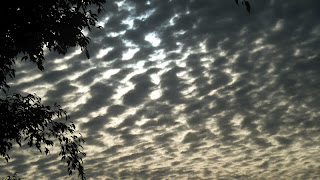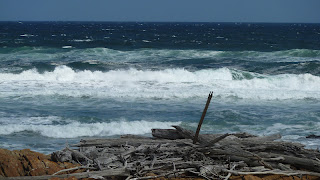I've been in Australia for three Anzac Days, but I'm only just beginning to get to grips with what it's really about.
It's a much bigger deal than Remembrance Day in the UK. For a start, many people get up at four o'clock in the morning to be in position at their community war memorials for the Dawn Service at 5am; to stand in quiet contemplation of all those who have given their lives in the wars in which Australia has participated, starting with the First World War. Whole families attend, including the very young and the very old.
Later in the morning there are slightly more celebratory gatherings including marches-past by veterans, currently serving members of the Defence Force, scouts and guides and others in uniform, and then social get-togethers, often at RSL* clubs. Anzac Day is a national holiday and trading hours are restricted. Last year, when 25 April coincided with Easter Monday, the latter was moved to Tuesday, such is the level of reverence for the day Australian and New Zealand troops landed on the Gallipoli peninsula in Turkey, where they met fierce opposition from Ottoman Turks defending their strategic position.
The idea was to open up the vitally important Dardanelles straits to the Allied navies: the Ottoman Empire was allied to Germany. But things did not go according to plan; the fighting lasted eight months before Allied soldiers were evacuated. Eight thousand Australians had lost their lives and many more had been seriously injured.
The Commonwealth of Australia was only a few years old at the time: the federal government was keen to establish Australia among the nations of the world. But the soldiers' efforts and bravery was of even greater import to Australian citizens back home, and it is just as significant today. I can't put it better than the Federal Member for Brisbane, Teresa Gambaro, who sent us all a leaflet with details of Anzac Day happenings.
The Anzac spirit of courage under fire, selflessness and unswerving loyalty, tenacity and mateship was forged in the battles at Gallipoli. The legend of our Anzacs has transcended time to become a symbol of what we value as Australians.As Australians bake their Anzac biscuits, turn out in their hundreds of thousands and cheer on Collingwood or Essendon at the MCG in the traditional Anzac Day Aussie Rules contest (which sometimes draws a bigger crowd than the AFL season finals), there are underlying issues to think about, too.
Anzac fever twas not ever thus. Jeff Sparrowª in the Overland literary journal reminds us that Anzac Day in the 1980s was a lot less of a 'turbocharged festival' than it is now; and, nearly 100 years ago, bravery of a different kind was shown by the many Australian non-combatants who opposed the slaughter of soldiers in Europe, some of whom protested in one of the first-ever anti-war demonstrations. Peace activism has never, however, precluded sympathy and respect for soldiers themselves.
In understanding the significance of Anzac Day to Australians, other social commentators mention the desire for a physical ritualistic connection in an atomised world in which we sit alone at computer screens for rather longer than we spend bonding within our local communities. Many people, as well as craving a universal meaning to their lives, need what Scott Stephens of ABC's Ethics department calls 'social glue' in order to connect in an increasingly secular, less civil society.
I defy anyone not to be moved when they hear The Last Post or The Ode from the elegy For the Fallen. Both are just as relevant to the memory of the millions who perished in the First World War as they are to the men and women killed in action in Afghanistan. As Australians recover the Anzac spirit and stand back in wonderment of the heroics of war, they may find the historical details a little less palatable; in particular major political misjudgements. At what point does disinterest in telling the complete truth become dishonesty. Truth is important for national wellbeing, otherwise 'social glue' becomes even less sticky.
In this case, Jeff Sparrow concludes, 'the only decent commemoration entails ensuring that nothing comparable ever happens again.'
* the Returned and Services League of Australia, a support organisation for those who have served or who are currently serving in the armed forces. RSL clubs perform as great a role in many communities, however, as social hubs
ª http://overland.org.au/blogs/new-words/2012/04/anzac-day-celebrates-forgetting/
This post was last updated on 1 May 2012




































































